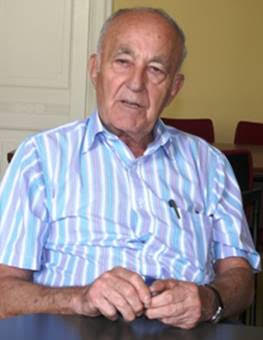
THE VOICE OF INTERNATIONAL LITHUANIA
|
VilNews has its own Google archive! Type a word in the above search box to find any article.
You can also follow us on Facebook. We have two different pages. Click to open and join.
|
Historical Lithuania
- Posted by - (17) Comment
in Palanga, West Lithuania

--Second row: - Zosė Ragauskaitė; Petrusė Bitkevičienė
--Third row: my father – Dr. Jonas Šliūpas
--Fourth row: –Pranas Ragauskas; Stasė Ragauskaitė;
my mother Grasilda Šliūpienė; Antanas Ragauskas
--Fifth row: – unknown person; Antanas Bitkevičius; Ričardas Estka.
Burlingame, California
- Bookmark :
- Digg
- del.icio.us
- Stumbleupon
- Redit it
- Posted by - (1) Comment

“The tents were freezing cold, harsh, and distressing; so, the adults decided to build better living conditions. "We can build barracks," said one Lithuanian, "We can catch the logs in the Lena River." The men waded barefoot into the icy water, caught floating logs, brought them to shore, and built the barracks. They covered the outside walls with snow and ice which they learned would help keep out the frigid temperature. They also found a large iron stove, which they placed in the middle of the building.” Read more...
- Bookmark :
- Digg
- del.icio.us
- Stumbleupon
- Redit it
- Posted by - (1) Comment
North Lithuania, year 1945
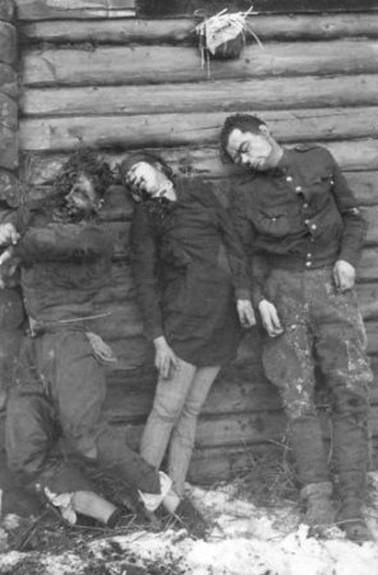
Christmas of 1945 is approaching a small farm on the outskirts of the village Šilagalis in northern Lithuania. It is the 22nd of December, and the mother in the house feels very happy that her 21-year-old son Povilas has finally come home for a visit, after being away for many months.
- Bookmark :
- Digg
- del.icio.us
- Stumbleupon
- Redit it
- Posted by - (3) Comment

- Bookmark :
- Digg
- del.icio.us
- Stumbleupon
- Redit it
- Posted by - (0) Comment
But privately, in the homes Lithuanians were sticking to the proud traditions of Christmas from centuries back in time. Christmas Worship in churches was banned, so also the religious ceremonies took place at home in the families.
Read more...- Bookmark :
- Digg
- del.icio.us
- Stumbleupon
- Redit it
- Posted by - (3) Comment

time of the year...
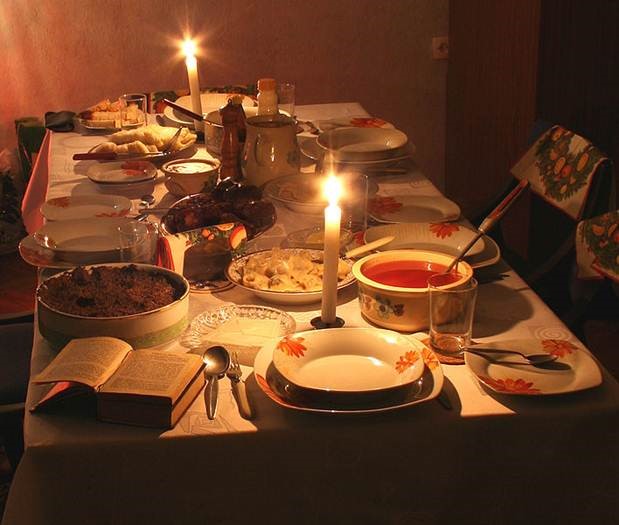
- Bookmark :
- Digg
- del.icio.us
- Stumbleupon
- Redit it
- Posted by - (4) Comment
2nd part: VilNews interview with
Professor Landsbergis, Veisaitė
 V. LANDSBERGIS IN STRASBOURG 1990 |
 SMUIKELĖ – V. LANDSBERGIS’ FAVOURITE PORTRAIT. BY R. PETROŠIŪTE FROM KELMĖ |

I. VEISAITE WITH HER DAUGHTER AND GRADCHILDREN
L/R: MICHAEL, ALINA AND DANIEL SLAVINSKY, 2011.
Journalist: Dalia Cidzikaitė
Questions prepared by Aage Myhre
Today we have the pleasure of presenting second last) part of a large, exclusive interview with two professors who have meant infinitely much for their homeland Lithuania. In today's interview, we focus on their memories, experiences of and thoughts about the BELOW eras of their lives, over the years 1950-2015:
· WHY IS STALIN STILL CONSIDERED A HERO BY MANY?
· THE LITHUANIAN PRESIDENT WHO WAS DEPORTED TO SIBERIA
· WAS LITHUANIAN PRESIDENT SMETONA
· MURDERED BY THE KGB?
· WHY DO LITHUANIANS ABROAD NOT RETURN HOME?
· DUAL CITIZENSHIP
· DID YOU KNOW EACH OTHER?
· LITHUANIA’S UNDERGROUND MOVEMENT DURING SOVIET TIMES
· HOW COULD THE LITHUANIAN COMMUNISTS
· GET BACK TO POWER ALREADY IN 1992?
· GEORGE SOROS AND A HUMANE DEVELOPMENT OF LITHUANIA
· DID YOU MEET VLADIMIR PUTIN FACE-TO-FACE?
· THE WORDS OF EINSTEIN
- Bookmark :
- Digg
- del.icio.us
- Stumbleupon
- Redit it
- Posted by - (2) Comment
Exclusive VilNews interview with Professor Landsbergis, Veisaitė
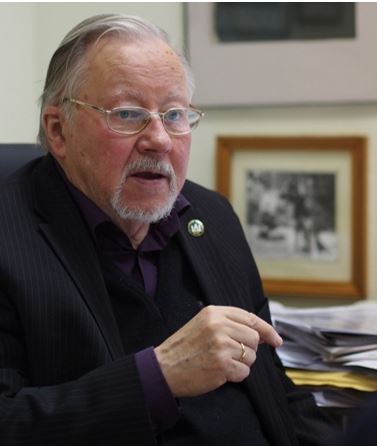 |
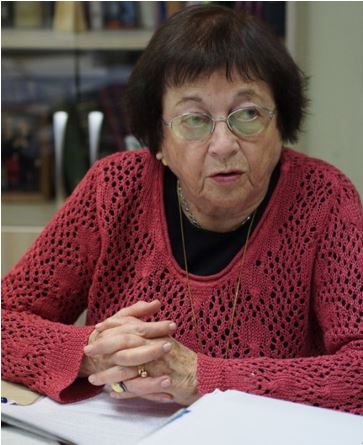 |
PROFESSOR IRENA VEISAITĖ AND PROFESSOR VYTAUTAS LANDSBERGIS.
Photo: Patrick Murphy
Journalist: Dalia Cidzikaitė
Questions prepared by Aage Myhre
Today we have the pleasure of presenting a large, exclusive interview with two professors who have meant infinitely much for their homeland Lithuania. In today's interview, we focus on their memories, experiences of and thoughts about the following eras of their lives, over the years 1930-1960:
· CHILDHOOD IN KAUNAS, LITHUANIA’S INTERWAR CAPITAL
· MEMORIES OF ANTANAS SMETONA, LITHUANIA’S PRESIDENT 1926-1940
· PREWAR COMMUNISM IN LITHUANIA?
· ADOLF HITLER – NAZISM – PREWAR GERMANY
· TO BE A LITHUANIAN JEW (LITVAK) DURING WORLD WAR II
· THE LANDSBERGIS FAMILY RELATIONSHIP WITH JEWS
· LITHUANIA’S 9-YEAR BLOODY PARTISAN WAR AGAINST THE SOVIET UNION
- Bookmark :
- Digg
- del.icio.us
- Stumbleupon
- Redit it
- Posted by - (0) Comment
Kaunas pictures from the 1930s

HAPPY EASTER 1938! FROM THE MAGAZINE "POLICE".
PHOTO: I.GIRČIO.
- Bookmark :
- Digg
- del.icio.us
- Stumbleupon
- Redit it
- Posted by - (12) Comment
Lithuanian DPs
in Australia after WW2

DISPLACED PERSONS FROM LITHUANIA ARRIVING IN AUSTRALIA –
MRS LYDIA DRESCHERIS WITH HER CHILDREN AND A FRIEND
Image Copyright Western Australian Museum
By Jura Reilly
After World War Two Australia agreed to provide a haven for 170,000 refugees from war-torn Europe. This was the beginning of a large-scale immigration program undertaken by the Australian government, which felt that the population needed to grow so that the country could defend itself better, and have enough people to fill all the jobs that were available. Most of the refugees arrived during 1949 and 1950. Before WW2, more than 90% of Australians were from a British or Irish background. Presently, this proportion has dropped to approximately 80%. A total of 9906 Lithuanian DPs came to Australia between 1947 and 1953. In the 2011 Census, 13,594 adults acknowledged Lithuanian origins.
Read more...- Bookmark :
- Digg
- del.icio.us
- Stumbleupon
- Redit it
- Posted by - (2) Comment
THIS ARTICLE, ABOUT THE HISTORY OF LITHUANIA, REACHED
ONE MILLION PERSONS AROUND THE WORLD IN ONLY ONE MONTH!
Lithuania – a country
you may think you know –
but do you really?
Text/research: Aage Myhre
We posted this article on one of our VilNews Facebook pages (www.facebook.com/VilNews) a few weeks ago. The article is about a seemingly 'boring' theme, namely the history of Lithuania.
But then it turns out that the article gets huge attention and reaches close to one million people worldwide in a matter of days. Probably never before have so many in such a short time been learning about the History of Lithuania!
For us who have worked with VilNews for many years this is yet another confirmation that Lithuania is of great interest to people around the globe if things are presented in attractive ways.

Did you know that Lithuania was a world super power – much longer than
USA has been – and Europe's largest country for more than 300 years
(1300-1600), stretching from the Baltic Sea to the Black Sea?
https://vilnews.com/2012-02-a-world-superpower-for-300-years
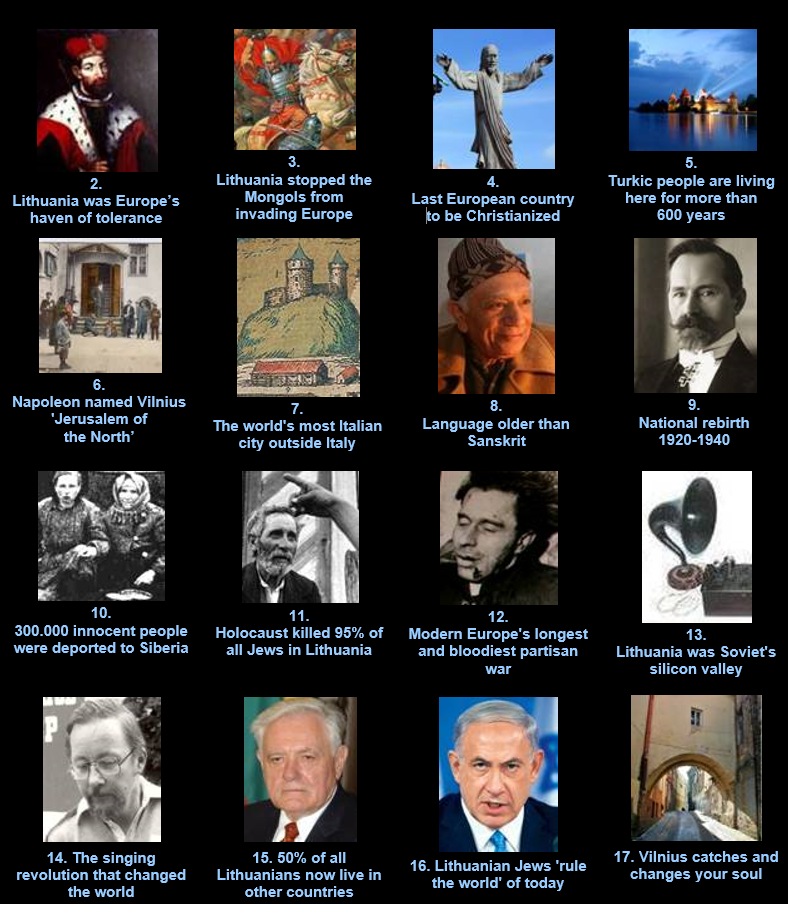
Read more...
- Bookmark :
- Digg
- del.icio.us
- Stumbleupon
- Redit it
- Posted by - (6) Comment
King of Lithuania?
Prince Inigo von Urach is ready!
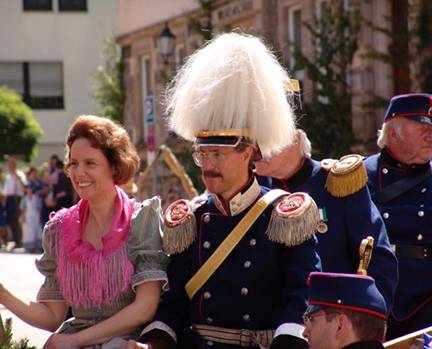
Prince Inigo of Urach, born 12 April 1962, with his wife –
Daniela Freiin von und zu Bodman, born 28 August 1963.
By Liudvikas Jakavičius-Grimalauskas
I am monarchist and I love to write about monarchy and nobility. I know that monarchy is not a topic that all people like, and that lot of people don’t want that monarchy returns to Lithuania. Personally, I think monarchy is the best form of government. If you research, 95% of the world monarchies are developed countries. But I respect all points of view, and also I can said that even if I prefer a monarchy to a republic, I am very satisfied with the work that our politicians have done, and I am very satisfied with the direction of our country. But, why do I think that this topic can be interesting for all Lithuanians? Because whether you like monarchy or not, this is part of our history, and Lithuanians like culture. So some people will like my points of views, and Prince Inigo von Urach views, and some will not. But the historical side of the article should be interesting for the majority of Lithuanians, whether they like monarchy or not.
Today Lithuania is a modern and dynamic North European nation of high technologies and innovations, with the second fastest growing economy in the European Union. But the territory that belongs to Lithuania has a large and old tradition as a Monarchy, tracing its political origins to 1219 as an independent Grand Duchy (The Grand Duchy of Lithuania), created by Mindaugas, a warrior who unified the territories that he conquered, proclaiming himself Grand Duke of Lithuania.
On July 6, 1253 Mindaugas was officially crowned as King of Lithuania by Pope Innocent IV. With his coronation was born the first Kingdom of Lithuania, giving rise to the state of Lithuania. When Mindaugas was killed by his nephew Trenoita, his nephew abolished the Kingdom and restored the Grand Duchy of Lithuania, which lasted until 1795, when Catherine “the Great” conquered Lithuania, and the Grand Duchy became part of the Russian Empire.
The peak in the history of Lithuania was the reign of Vytautas "the Great" between 1392 and 1430. The Lithuanian Empire during his reign covered more than a million square kilometers, and was one of the most powerful nations in Europe. Led by Vytautas "the Great" Lithuanians and their allies (Poland) destroyed the power of the Teutonic Order (Germany) in 1410 during the Battle of Grünwald.
The Battle of Grünwald was one of the largest battles in Medieval Europe and is regarded as the most important victory in the history of Lithuania.
The period 1569 - 1795 was the decline of Lithuania during their official union with Poland. In
1795, Lithuania was occupied by the Russians for the first time and Russians tried to exterminate
Lithuanian culture
Fortunately, Russians failed in their attempt to destroy Lithuanian culture, thanks to the work of many Lithuanian patriots. One prove of that is Lithuanian language that is one of only two living languages (together with Latvian) in the Baltic branch of the Indo – European language family. Lithuanian language is one of the world’s oldest languages and is believed to be the most conservative living Indo – European language, retaining many features of Proto – Indo – European now lost in other Indo – European languages. It's really amazing how our ancestors managed to preserve our language so pure, despite Russian oppressions.
The end of the eighteenth century was a period of revolutions that ended at the beginning of the nineteenth century destroying many monarchies. The majority of the revolting nations replaced their thrones with communist governments.
|
On February 16, 1918 Lithuania declared its independence from the Russian Empire. On June 4, 1918 the Council of Lithuania voted to invite HSH Prince Wilhelm von Urach, 2nd Duke of Urach and Count of Württemberg to become King of Lithuania. Within a few months of his election, it became clear that Germany would lose World War I and on November 2, 1918 the Council of Lithuania reversed its decision, proclaiming the first Republic of Lithuania. As King of Lithuania, HSH King Wilhelm von Urach used the name of Mindaugas II. His election as King of Lithuania can be explained by several factors: he was Roman Catholic (the dominant religion in Lithuania), he was not a member of the House of Hohenzollern, the family to which belonged the German Emperor Wilhelm II who wanted Lithuania to be a monarchy in personal union with Prussia (because Lithuania was the predecessor state of Prussia, the precursor state of the German Empire), he had had a successful military career, and finally, if the central powers had won the war, Lithuania could have expected German protection in the event of future intrusions by the Russian Empire. Wilhelm von Urach was born as HSH Prince Wilhelm Karl Florestan Gero Crescentius of Urach, Count of Württemberg. He was the eldest son of Friedrich Wilhelm Alexander Ferdinand of Württemberg, 1st Duke of Urach and Count of Württemberg (head of a morganatic branch of the Royal House of the then Kingdom of Württemberg), and of his second wife, Princess Florestine of Monaco, occasional acting Regent of Monaco (daughter of Prince Florestan I of Monaco). It is noteworthy that through his marriage to Duchess Amalie of Bavaria (1865–1912), HSH King Wilhelm von Urach is related, also, to the Lithuanian Princess Louise Caroline Radvila of Birzai. |
Prince Wilhelm of Urach, Count of Württemberg, 2nd Duke of Urach (Wilhelm Karl Florestan Gero Crescentius; German Fürst Wilhelm von Urach, Graf von Württemberg, 2. Herzog von Urach; 30 May 1864 – 24 March 1928) was a German prince who was elected King of Lithuania with the regnal name Mindaugas II on 11 July 1918. He never assumed the crown however, as German authorities declared the election invalid and the invitation was withdrawn in November 1918. |
Wilhelm never had the chance to visit Lithuania, remaining instead at Liechtenstein Castle; however he started to learn the Lithuanian language. He had no time to move to Lithuania and finish to learn Lithuanian, because the Council of Lithuania reversed its decision to inviting him to become King of Lithuania. As the last King of Lithuania, if the monarchy resurface someday, his great-grandson HSH Prince Inigo von Urach, Duke of Urach and Count of Württemberg would have the right to become King of Lithuania, as his heir.
Today, in the Liechtenstein Castle property of the House of Württemberg (Urach brand), there is a letter of Pope Benedict XV, welcoming Wilhelm's selection as the future King of Lithuania, and some letters between General von Ludendorff and Swiss government stating the election of King Mindaugas II in 1918.
Therefore, we can say that in Lithuanian history there were only two kings: Mindaugas I (who began his reign in 1253) and Mindaugas II (who began his reign 1918). The other monarchs who ruled Lithuania held the title of "Grand Duke of Lithuania", not "King of Lithuania".
It is recorded in all the “noble registers” like the Almanach of Gotha, that the Prince Wilhelm von Urach became King of Lithuania. The Royal Houses that ruled Lithuania during all their history were: House of Mindaugas (1236 -1285), House of Gediminas (1285 -1440), House of Jagiellon (1440 -1569), House of Poniatowski (1764 -1795) and House of Württemberg (1918).
HSH, the Duke of Urach and Count of Württemberg; Inigo von Urach was born on April
12, 1962 in Bavaria, Germany. He is the direct descendant of the last Lithuanian King of Lithuanian, Roman Catholic and a dedicated father of three children. He is connected to Albanian, Bavarian, British, Liechtensteiner, Luxembourgish, Monegasque, Portuguese and Russian royal families by birth.
The Prince supports a Lithuanian culture center in Germany to promote Lithuanian culture, while he is learning our language. He is often visiting Lithuania, the country of his great-grandfather, and meeting Lithuanians from a wide spectrum of life. He also is working hard to promote Lithuania abroad, and he is able to bring closer ties between Lithuanian nobility and the rest of European nobility. Talking with Prince Inigo von Urach, he shared with us his views about his great-grandfather, his forefathers, monarchy and the current situation of Lithuania;

Prince
Inigo of Urach during a visit to Lithuania in 2012.
L. JAKAVIČIUS-GRIMALAUSKAS: Some famous economists of the world argue that it is the modern parliamentary democracy that has plunged the world into the economic and financial crisis. Do You think the constitutional monarchy would be more resistant to such crises and have more ways to overcome them?
PRINCE INIGO VON URACH: The monarchies have the advantage that they have long term perspectives and no worries about the next election. Monarchy represents continuity and responsibility through its own family honor. The monarchs identify themselves with the country and the people. They are the country. Therefore they do nothing against themselves if they can rule a country. The work for a good standing in the world.
And the monarchs are the bad conscious for the politicians. But therefore they need the possibility of influence to say: This way we take.
L. JAKAVIČIUS-GRIMALAUSKAS: During Your first visit to Lithuania one the questions of the Lithuanian mass media was: "Are You thinking about the Lithuanian throne?" Your answer: "I am ready to repeat my grandfathers way if Lithuanian people may have need of my knowledge and experience". Has Your attitude changed over the 3 years that passed since then?
PRINCE INIGO VON URACH: As my grandfather, in a modern way, I would be ready for the challenges of today. If the Lithuanian people or their representatives ask me, I am ready. In my case, it is a historical heritage and duty.
L. JAKAVIČIUS-GRIMALAUSKAS: Do you have heirs if you become King of Lithuania some day?
PRINCE INIGO VON URACH: Yes, Duke Eberhard von Urach (1990), Duke Anselm von
Urach (1991) and Duchess Amelie von Urach (1994).
L. JAKAVIČIUS-GRIMALAUSKAS: After your first visit to Lithuania in 2009 Lithuanian media reported about your plans to settle in Lithuania and invest in real estate. Have you carried out such plans?
PRINCE INIGO VON URACH: More or less. I made some investments in Lithuania. But I am not living in Lithuania for the time being. Even though I don’t live in Lithuania, I am in touch with Lithuanian people and with Lithuanian institutions.
L. JAKAVIČIUS-GRIMALAUSKAS: We learned in an interview with you in media a few years ago, that you are interested in environment and alternative energy sources. Now we ask you how do you find the decision to shut down Ingalina Nuclear Plant?
PRINCE INIGO VON URACH: I think that nuclear energy is a cul-de-sac. Uranium, like oil are finite and limited resources. Sooner or later the time will tell us. Maybe it will be fifty, maybe a hundred years, it does not matter. The uranium will finish, and what will happen when the camera stops working? And also all the pollution related to the fuel, production, use and later destruction. The best solution is green-energies. Let us recall the Gospel of Matthew: Is it human that your child asks for bread, and you give him a stone? And what we do, we leave all these problems to our children and grandchildren.
L. JAKAVIČIUS-GRIMALAUSKAS: How do you find the decision to construct a new Nuclear Plant in Visaginas area?
PRINCE INIGO VON URACH: This wise decision of the Lithuanian people is that they are against the nuclear power. Because what do you do with the, euphemistic called “nuclear waste”? It is raying and poisoning. It is angerous for fifty thousand years. 2000 Generations! Try to imaging this! For the security there are bad examples like the big accidents Harrisburg (a three miles island), Chernobyl or Fukushima. There are other possibilities, in renewable energy: e.g. water, solar, photovoltaic-biological (wood, energy wood, rap soil, bio-gas) or geological power.
L. JAKAVIČIUS-GRIMALAUSKAS: What is your point of view about the current economic situation in Lithuania?
PRINCE INIGO VON URACH: There are several possibilities. First, I have to make clear that I am not yet in the responsibility. The nowadays government is in charge to solve the problems. But they have the difficulties that they are not born for that, not grown up for that, not educated for that, just elected (for four years). And with that they are able to do it or not. This short time is good and bad, depends on the character of the politician. The politicians must make compromises, which often means to choose the worst of two or more opinions. To avoid further problems it is necessary to drop the nuclear power because of its nuclear, euphemistic called, "waste". This is toxic and radiant for ten thousands of years. Oil and gas is also finitely. What is remaining? The renewable energy resources.
LT has no mineral resources, only its people. And that must be the future. Logical is to revalue this people. And that means to improve the education and training of the people. Better schools, universities. Promotion of the mentally gifted pupils and students and make them stay in or come back to LT. A good example is King Maximilian I Joseph of Bavaria. He founded the Maximilianeum to keep the mental resources (science, economic, military, administration) in and for the country, because it was HIS own kingdom. He thought in centuries and generations and had the possibility of influence. Summarized: The people and their potential (in science, medicine, technology, etc...) is the future.
L. JAKAVIČIUS-GRIMALAUSKAS: What does His Excellency feel for Lithuania and Lithuanians?
PRINCE INIGO VON URACH: Lithuanias Taryba had elected my grandfather Herzog Wilhelm v. Urach etc ... as the king of Lithuania. In this tradition I feel the responsibility to help LT if they want call me as their sovereign. One step is done by the monarchist movement to recognize me as the heir to the throne and the pretender of the throne. If LT and its people want and call me for King, I am ready for that to do all I can to make a good as possible future for LT. A king think in generations and centuries, he identifies with his country. That is the advantage. But meanwhile I try to help and support LT as good as I can privately. I feel for the people and I want LT to have a good position in the world. I want to make it attractive for its own people, wherever in the world they are, invite them to come back to LT. I am grateful for any support and help to make this come true.
To finish this article, I want to thank HSH Prince Inigo von Urach for all his attentions and his sharing with us of such interesting views about our past, present and future.

|
|
Liudvikas Jakavičius-Grimalauskas is a columnist and great-grandson of the Lithuanian editor, writer, theatre director and actor Liudvikas Jakavičius (Lietuvanis), and great-grandson of Honorata Grimalauskaitė-Jakavičienė, a Lithuanian noblewoman. He recently had the opportunity to interview HSH Prince Inigo von Urach, Duke of Urach and Count of Württemberg. |
BIOGRAPHY:
Liudvikas Jakavičius-Grimalauskas is a Lithuanian columnist and Law student at the University of Salamanca (Kingdom of Spain), and a great-grand son of the writer, publisher, banker and nobleman Liudvikas Jakavičius-Lietuvanis, the greatest exponent of Lithuanian literature of Interwar. He was born on July 23, 1984 at the Spanish Hospital of Mexico in Mexico City. He is son of the model and fashion designer Karmen Aida Jakavičiūtė-Grimalauskaitė Janavičiūtė, better known as Carla Rigg, whom conceived him as single mother. Liudvikas Jakavi čius-Grimalauskas studied his pre-university studies at different reputable schools of Mexico City, including Centro Universitario México (CUM), a Marist institution who had as pupils great personalities like Octavio Paz (Nobel Prize of Literature); Plácido Domingo (Tenor); Manuel Bartlett Díaz (politician); Carlos Fuentes (Cervantes Prize and Prince of Asturias Award) or José Ángel Gurría Treviño (former Governor of the Bank of México and current Secretary General of the OECD). In 2005, Liudvikas Jakavičius-Grimalauskas recovered Lithuanian citizenship and left the exile with his mother. He renounced to Mexican citizenship before a notary, as he is skeptical about dual citizenship. When he received his Lithuanian passport he told reporters: “I am only Lithuanian. Citizenship is an expression of loyalty to the State and it is incompatible being loyal to more than one country. I am proud of my Lithuanian origin and I love my homeland, Lithuania”. Liudvikas Jakavičius- Grimalauskas live between Spain, United Kingdom and Lithuania. He is devoted to research and promote the life and work of his great-grandfather Liudvikas Jakavičius (Lietuvanis). In 2011, Liudvikas Jakavičius-Grimalauskas announced to the press (Šiauliu kraštas) that he will open in the near future a museum about the Soviet Holocaust, and its going to be called “Liudvikas Jakavičius- Lietuvanis Museum”, in honor to his great-grandfather. As columnist, he has worked for several media like “Kultūros barai”, “Balsas”, “Valstietis” and “Numen. Revista de Excelencia” (the last, a Spanish magazine about monarchy directed by the Count of Bobadilla) to name a few. Liudvikas Jakavičius-Grimalauskas and his family was part of the Lithuanian Diaspora who lived in the exile by the Soviet Occupation, and that returned to Lithuania after the fall of the communist regime. As his great-grandfather, Liudvikas Jakavičius-Grimalauskas is devoted to promote and keep alive Lithuanian culture. Now he is working in first book that will be published during the next year. The book will be an official biography of his aunt, the Lithuanian-Spanish artist Marcia Bell (Graciela Isabel Jakavičiūtė-Grimalauskaitė Janavičiūtė). There he will write about his aunt’s career as an actress (20 films), singer (7 L.P.) and composer (for her and for other artists), and obviously, about her personal life too, like her relationship as fiancé with H.R.H. Gonzalo de Borbón y Dampierre, Duke of Aquitaine and grandson of Spanish monarchs Alfonso XIII & Queen Victoria Eugenie of Battenberg (also granddaughter of Queen Victoria of the United Kingdom).
- Bookmark :
- Digg
- del.icio.us
- Stumbleupon
- Redit it

The Seal of King Mindaugas (1203-1263, reign 1251-1263) is a medieval
seal affixed to the October 1255 act by Mindaugas, King of Lithuania,
granting Selonia to the Teutonic Knights.
Historically, The Kingdom of Lithuania is rooted in the 13th Century when Mindaugas was crowned by Pope Innocent IV as King of Lithuania. Over the next five hundred years the storms of war and politics rendered its toll. Expansion and alliances with Poland and other nations, were not strong enough to keep the transformed Grand Duchy of Lithuania independent. In 1795 it was all but consumed by Russia.
After two centuries, in 1918 the strong will of the Lithuanian people gained independent statehood but this was also short lived. Twenty years of autonomy again ended with Russian and Nazi occupation.
Today’s Republic of Lithuania declared Independence (again) as a parliamentary democracy on March 11, 1990 and was internationally recognized in September 1991.
After the Freedom Declaration in 1918, there were many who wanted the monarchy reinstated in Lithuania. In 1990-1991 there was hardly anyone who dared to come up with such an idea. But today more and more people want attention to Lithuania's proud, royal history, and many believe the royal idea and past has wrongfully been swept under the rug ...
Here are some interesting articles, absolutely worth reading!
The trampling of Lithuania’s history
Restoring Lithuania's Royal Titles
Official site of His Imperial Majesty King Roman
King Roman of Lithuania sells titles from his house
- Bookmark :
- Digg
- del.icio.us
- Stumbleupon
- Redit it
- Posted by - (0) Comment
Gediminas’ Tower,
the symbol of Lithuania

Photos: Aage Myhre
Gediminas' Tower (Lithuanian: Gedimino pilies bokštas) is the only remaining part of the Upper Castle in Vilnius, Lithuania.
The first fortifications were built of wood by Duke of the Grand Duchy of Lithuania, Gediminas. Later the first brick castle was completed in 1409 by Grand Duke Vytautas. Some remnants of the old castle have been restored, guided by archeological research.
It is possible to climb to the top of the hill on foot or by taking a funicular. The tower houses an exposition of archeological findings from the hill and the surrounding areas. It is also an excellent vantage point, from where the panorama of Vilnius' Old Town can be admired.
Gediminas' Tower is an important state and historic symbol of the city of Vilnius and of Lithuania itself. It is depicted on the national currency, the litas, and is mentioned in numerous Lithuanian patriotic poems and folk songs. The Flag of Lithuania was re-hoisted atop the tower on October 7, 1988, during the independence movement that was finalized by the Act of the Re-Establishment of the State of Lithuania on March 11, 1990.
The Castle Hill surrounded by rivers was a convenient location to build a castle and establish a bigger settlement. Archaeological investigations have revealed that there had already been a settlement on the Castle Hill in the Neolithic. In the 9th century, the hill was reinforced with wooden and stone fences, whereas in the 11th-13th centuries a wooden castle had already been erected. The early history of the castle is closely related to the history of the development of the city.
During the reign of Grand Duke of Lithuania Gediminas, Vilnius was already known as the capital of the Grand Duchy of Lithuania, and the Vilnius Castle was mentioned for the first time in the 1323 treaty between Gediminas and the Teutonic Order. Often the Higher Castle is referred to as the Gediminas Castle. During the reign of the first rulers from the Gediminas dynasty the Vilnius Higher Castle was of great significance not only as a political centre of the Grand Duchy of Lithuania, but also as a constituent element of the defensive complex of the capital (together with the Lower and Crooked Castles) that withstood an intensified attack of the Teutonic Order during the second half of the 14th century. When a fire destroyed the wooden castle, a brick castle was constructed during the reign of Grand Duke of Lithuania Vytautas at the beginning of the 15th century. The remains of the brick castle have survived until the present day.
Eventually, as the situation in the state changed, the castle lost its purpose and subsequent fires and wars, after which it was not repaired, devastated the castle. During 1610-1613, a prison functioned in the basement of the castle, whereas the Higher Castle was last used as a defensive fortress during the war in 1655-1661. The Muscovite army was temporarily settled in the castle. Afterwards, the castle was completely desolated and was slowly disintegrating and declining.

The defensive functions of the castle were brought to light in the 19th century, when a fortress was established in the territory of Vilnius castles following the order of the Tsar of Russia in 1831. The ruins of the Higher Castle were also taken care of, i.e. the remains of the southern and northern towers of the Higher Castle as well as its western and northern walls were demolished, the masonry was conserved, and a sloping Castle Hill was reinforced. In 1838, a wooden two-storey structure of optical telegraph was erected on top of the western tower. When the fortress was removed from the territory of Vilnius castles, a new road was built on the slope of the Castle Hill in 1896, the slopes were planted with trees, and a café was opened in the western tower. During the interwar period, the conservation works were carried on.
When Lithuania restored its state in 1918, the flag of Lithuania was first hoisted on the Gediminas Castle Hill on January 1, 1919. Unfortunately, this was not for long. Vilnius region was occupied by the Polish and only on October 29, 1939 the tricolour of Lithuania was hoisted again on the castle tower. During the World War II the western tower of the castle was damaged badly.

After the war, although Lithuania was occupied by the Soviet Union, the tower was rebuilt and, in 1960, when the territory of the hill was arranged and the fragments of the castle buildings were conserved, the Castle Museum was opened in the western tower.
From 1968, the museum became the subdivision of the National Museum of Lithuania (at that time, the Museum of History and Ethnography). When the Lithuanian National Revival began, the flag of Lithuania was once again hoisted on the castle tower on October 7, 1988, whereas in 1995, when the castle tower was renovated, a renewed exposition opened its doors to visitors. A picturesque panorama of the capital of an independent Lithuania opens up from the scenic overlook installed on the top of the tower. The castle tower together with the flag of the Lithuanian state became the symbol of national struggles for independence and statehood.

- Bookmark :
- Digg
- del.icio.us
- Stumbleupon
- Redit it
- Posted by - (1) Comment
February 16, 1918
Act of independence

Facsimile of the Act of February 16
Dear readers,
Two of the most significant dates for Lithuania in the 20th Century were February 16, 1918 when Lithuania declared its independence from Imperial Russia by signing the Act of Independence of Lithuania and March 11, 1990 when the Act of the Re-Establishment of the State of Lithuania was signed which re-established the country’s freedom from Soviet Russia. We would like to share with you some of the situations that existed at this time and events that took place leading up to February 16, 1918 and the aftermath of this historical event.
Su pagarbe
Vincas Karnila
Associate editor
The Act of Independence of Lithuania (Lietuvos Nepriklausomybės Aktas) or Act of February 16 was signed by the Council of Lithuania on February 16, 1918, proclaiming the restoration of an independent State of Lithuania, governed by democratic principles, with Vilnius as its capital. The Act was signed by all twenty representatives, chaired by Jonas Basanavičius. The Act of February 16 was the end result of a series of resolutions on the issue, including one issued by the Vilnius Conference and the Act of January 8. The path to the Act was long and complex because the German Empire exerted pressure on the Council to form an alliance. The Council had to carefully maneuver between the Germans, whose troops were present in Lithuania, and the demands of the Lithuanian people.
The immediate effects of the announcement of Lithuania's re-establishment of independence were limited. Publication of the Act was prohibited by the German authorities so the text was distributed and printed illegally. The work of the Council was hindered since Germans remained in control over Lithuania. The situation changed only when Germany lost World War I in the fall of 1918. In November 1918 the first Cabinet of Lithuania was formed, and the Council of Lithuania gained control over the territory of Lithuania. Independent Lithuania, although it would soon be battling the Wars of Independence, became a reality.
While the Act's original document has been lost, its legacy continues as the legal basis for the existence of modern Lithuania, both during the interwar period and since 1990. The Act formulated the basic constitutional principles that were and still are followed by all Constitutions of Lithuania. The Act itself was a key element in the foundation of Lithuania's re-establishment of independence in 1990. Lithuania, breaking away from the Soviet Union, stressed that it was simply re-establishing the independent state that existed between the world wars and that the Act never lost its legal power.
Historic background and Council of Lithuania
After the last Partition of the Polish-Lithuanian Commonwealth in 1795, Lithuania was annexed by the Russian Empire. During the 19th century, both the Lithuanians and the Poles attempted to restore their independence. They rebelled during the November Uprising in 1830 and the January Uprising in 1863, but the first realistic opportunity came when both Russia and Germany were weakened during World W February 16, 1918.

The original 20 members of the Council of Lithuania after signing the Act of February 16, 1918
In 1915, Germany occupied western parts of the Russian Empire. After the Russian Revolution in 1917, Germany conceived the geopolitical strategy of Mitteleuropa which was a regional network of puppet states that would serve as a buffer zone and agreed to allow the Vilnius Conference, hoping that it would proclaim that the Lithuanian nation wanted to detach itself from Russia and establish a closer relationship with Germany.
However, their strategy backfired. The Vilnius Conference or Vilnius National Conference (Vilniaus konferencija) met between September 18, 1917 and September 22, 1917 and began the process of establishing a Lithuanian state based on ethnic identity and language that would be independent of the Russian Empire, Poland, and the German Empire. It elected a twenty member Council of Lithuania that was entrusted with the mission of declaring and re-establishing an independent Lithuania. The Conference, hoping to express the will of the Lithuanian people, gave legal authority to the Council and its decisions. The German authorities did not allow that resolution to be published, but they did permit the Council to proceed. While the Vilnius Conference laid the basic guiding principles of Lithuanian independence, it deferred any matters of political structure of the future Lithuania to the Constituent Assembly, which would later be elected in a democratic manner by means of a public vote.
PATH to the ACT of FEBRUARY 16
Act of December 11
The Act of December 11 was the second stage in the progression towards the final Act of Independence. The first draft, demanded by chancellor Georg von Hertling, was prepared by the German Ministry of Foreign Affairs on December 1. Further changes were jointly prepared by the German chancellery and by a delegation of the Council of Lithuania. The delegation's members were Antanas Smetona, Steponas Kairys, Vladas Mironas, Jurgis Šaulys, Petras Klimas and Aleksandras Stulginskis. After discussion amongst the parties, a compromise was reached on the document's text. The German representative, Kurt von Lersner, insisted that not one letter be changed in the agreed-upon text and that all the Council members sign the document.



Antanas Smetona Steponas Kairys Vladas Mironas



Jurgis Šaulys Petras Klimas Aleksandras Stulginskis
After the delegation returned to Vilnius, a session of the Council was held on December 11 in order to discuss the Act. It was adopted without any further changes. Fifteen voted in favor of the Act, three voted against it, one member abstained, and one did not participate. It is not entirely clear whether every member of the Council signed this document. The Act was written in German, and apparently no official Lithuanian translation was prepared. Therefore different sources provide slightly different translations. The Act of December 11 pronounced Lithuania's independence, but also asked German government for protection (clause 2) and called for "a firm and permanent alliance" with Germany. Since the Act specified that the alliance was to be formed based on conventions concerning military affairs, transportation, customs, and currency, many Lithuanians argued that the Council had overstepped its authority since the September resolution adopted by the Vilnius Conference clearly demanded that a constituent assembly decide these crucial matters of state.
Act of January 8
When peace talks started between Germany and Russia in 1918, German authorities asked the Lithuanian representatives to prepare two notifications of independence. One for Russia, in which Lithuania's ties with Russia would be denounced and nothing would be mentioned about an alliance with Germany and a second version to be released in Germany that would essentially repeat the Act of December 11. The Council decided to amend the first part of the Act of December 11. Petras Klimas included a sentence calling for the Constituent Assembly. Another important development was the statement that democratic principles would be the basis of the new state's governance, something that was declared by the Vilnius Conference, but omitted in the Act of December 11. The second part, mentioning the "firm and permanent alliance with Germany", was completely omitted. Its final version was approved on January 8, 1918, the same day that U.S. President Woodrow Wilson announced his Fourteen Points. In its essence, the Act of January 8 did not differ from the Act of February 16.

Jonas Basanavičius, the chairman of the Council when the Act of February 16 was signed
However, Ober Ost, the German military administration, rejected the changes. On January 26, in compliance with the earlier request, the two versions of the notification were approved, but they did not include the changes of January 8. The texts were prepared based on the Act of December 11. These concessions to the Germans created tensions among the Council members. Four members, Mykolas Biržiška, Steponas Kairys, Stanislaw Narutowicz and Jonas Vileišis, resigned from the Council in protest. The chairman of the Council, Antanas Smetona, who supported the Act of December 11, stepped down. Jonas Basanavičius, who would later be called the patriarch of independence, was elected as the chairman.
Act of February 16
Germany failed to recognize Lithuania as an independent state, and the Lithuanian delegation was not invited to the Brest-Litovsk negotiations that started on December 22, 1917 between the Central Powers (The Central Powers consisted of the German Empire, the Austro-Hungarian Empire, the Ottoman Empire, and the Kingdom of Bulgaria. The name "Central Powers" is derived from the location of these countries; all four were located between the Russian Empire in the east and France and the United Kingdom in the west) and Russia in order to settle territorial claims. During the first and final official joint session between the Council and the German authorities, it was made clear that the Council would serve only as an advisory board. This situation gave additional backing to those Council members who were seeking independence without any ties to other countries. The prime concern at this point was to invite back those members who had left the Council. Negotiations were undertaken that led to the reformulation of previous versions of the Act.

House of the Signatories at Pilies Street in Vilnius.
The four withdrawn members demanded that the Council return to the Act of January 8 and omit the mention of any alliance with Germany. After heated debates that lasted for several weeks, on February 15, at 10 am, the new revision of the Act was ready. It included, with minor stylistic changes, wording of the Act of January 8 and formal proclamation and notification, drafted on February 1. Formal proclamation and notification do not effect the legality of a document and do not change the meaning of a legal document. The Council, including the withdrawn members, was invited to return the next day for its finalization. On the next day, February 16, 1918, at 12:30 pm, all twenty Council members met in the room of Lithuanian Committee for Support of the War Victims, at 30 Didžioji Street (currently marked 26) in Vilnius. The building has since been known as the House of the Signatories (signatarų namai) and houses a museum. The Council first voted to approve the first part, the first two paragraphs up to the word drauge, of the Act. This section was approved unanimously. The second part, however, did not receive support from the four withdrawn members because they were not satisfied with the word "finally" in describing the duties of the Constituent Assembly (in "... the foundation of the Lithuanian State and its relations with other countries will be finally determined by the Constituent Assembly ..."). They were afraid that this word would give a pretext for the Council to usurp the powers of the Constituent Assembly, while the majority argued that the word simply expressed the non-negotiable and non-appealable nature of the future Assembly's decisions. Therefore the Act was unanimously approved but did not have full-fledged support from all twenty men.
Final text of the Act
Line 1
Original text – NUTARIMAS
English translation - RESOLUTION
Line 2
Lietuvos Taryba savo posėdyje vasario 16 d. 1918 m. vienu balsu nu-
The Council of Lithuania in its session of February 16, 1918 decided unanimously
Line 3
tarė kreiptis: į Rusijos, Vokietijos ir kitų valstybių vyriausybės šiuo
to address the governments of Russia, Germany, and other states with the following
Line 4
pareiškimu:
declaration:
Line 5
Lietuvos Taryba, kaipo vienintelė lietuvių tautos atstovybė, remdamos
The Council of Lithuania, as the sole representative of the Lithuanian nation, based on
Line 6
pripažintaja tautų apsisprendimo teise ir lietuvių Vilniaus konferencijos
the recognized right to national self-determination, and on the Vilnius Conference's
Line 7
nutarimu rugsėjo mėn. 18–23 d. 1917 metais, skelbia atstatanti nepriklau-
resolution of September 18–23, 1917, proclaims the restoration of the independent
Line 8
somą demokratiniais pamatais sutvarkytą Lietuvos valstybę su sostine
state of Lithuania, founded on democratic principles, with its captital
Line 9
Vilniuje ir tą valstybę atskirianti nuo visų valstybinių ryšių, kurie
in Vilnius and declares the termination of all state ties which formerly
Line 10
yra buvę su kitomis tautomis.
bound this State to other nations.
Line 11
Drauge Lietuvos Taryba pareiškia, kad Lietuvos valstybės pama-
The Council of Lithuania also declares that the foundation of the Lithuanian State and
Line 12
tus ir jos santykius su kitomis valstybėmis privalo galutinai nustatyti
its relations with other countries will be finally determined by the
Line 13
kiek galima graičiau sušauktas steigiamasis seimas, demokratiniu budu
Constituent Assembly, to be convoked as soon as possible, elected democratically
Line 14
visų jos gyventojų išrinktas.
by all its inhabitants.
Line 15
Lietuvos Taryba pranešdama apie tai .....................
The Council of Lithuania by informing the Government of ..................... to this effect
Line 16
vyriausybei, prašo pripažinti nepriklausomą Lietuvos valstybę.
requests the recognition of the Independent State of Lithuania.
Dr. Jonas Basanavičius
Saliamonas Banaitis
Mykolas Biržiška
Vilniuje, vasario 16 d. 1918 m. Kazys Bizauskas
In Vilnius, February 16, 1918
Pranas Dovydaitis
Jurgis Šaulys Steponas Kairys
Jokūbas Šernas Petras Klimas
Antanas Smetona Donatas Malinauskas
Jonas Smilgevičius Vladas Mironas
Justinas Staugaitis Stanisław Narutowicz
Aleksandras Stulginskis Alfonsas Petrulis
Jonas Vailokaitis Kazimieras Steponas Šaulys
Jonas Vileišis
AFTERMATH
Lithuania
Soon after the signing, the Act was taken to Germany and handed to parties in the German Parliament. On February 18, the text was reprinted in German newspapers, including Das Neue Litauen, Vossische Zeitung, Taegliche Rundschau and Kreuzzeitung. In Lithuania a text of the proclamation was prepared for printing in newspapers, particularly in Lietuvos Aidas, the Council's newspaper established by Antanas Smetona but the German authorities prohibited this publication. Although the majority of the copies of the issue were confiscated, the newspaper's editor, Petras Klimas, managed to hide about 60 of them. This censorship meant that Germany considered the distribution and dissemination of the Act as illegal in Lithuania.

The front page of Lietuvos Aidas with the text of the Act. The bulk of the issue was confiscated by German authorities.
On March 3, 1918, Germany and the now Bolshevik Russia signed the Treaty of Brest-Litovsk. It declared that the Baltic nations were in the German interest zone and that Russia renounced any claims to them. On March 23, Germany recognized independent Lithuania on the basis of the December 11 declaration. However, in substance, nothing had changed either in Lithuania or in the Council's status. Any efforts to establish an administration were hindered. This situation changed when the German Revolution started and Germany lost the war in the fall of 1918 and was no longer in a position to dictate terms. The Council of Lithuania adopted the first provisional constitution on November 2. The functions of government were entrusted to a three member presidium, and Augustinas Voldemaras was invited to form the first Cabinet of Ministers of Lithuania. The first government was formed on November 11, 1918, on the day that Germany signed the armistice in Compiègne. The Council immediately began to organize an army, police, municipalities, and other institutions. The proclaimed independence was established.
The Act
Two copies of the Act were signed, the original and a duplicate. The original was given to Jonas Basanavičius to safeguard and protect. The original was never published or used in any public matters; its existence was first mentioned in the press in 1933. The whereabouts of the original remain unknown. The duplicate was used in day-to-day business, and was stored in the president's archives until June 15, 1940, the day when Lithuania received an ultimatum from Soviet Russia and lost its independence. After that date the document disappeared. Neither the original nor the duplicate has been located. Historians and adventurers continue to hunt for it. In 2006, a team of engineers searched the walls of the former house of Petras Vileišis. Two facsimiles of the duplicate were produced, one in 1928 and the other in 1933. The 1928 facsimile is a closer reproduction of the Act in its original state; there are spelling errors, and the background is visually "noisy", while the 1933 facsimile shows the Act in an "improved" condition.
The Signatories
Most of the signatories of the Act remained active in the cultural and political life of independent Lithuania. Jonas Vileišis served in the Seimas/Parliament and as mayor of Kaunas, which was then the temporary capital of Lithuania due to Poland’s occupation of Vilnius. Saliamonas Banaitis was involved in finance, opening several banks. Among the signatories were two future Presidents of Lithuania, Antanas Smetona and Aleksandras Stulginskis. Jonas Basanavičius, chairman of the Council of Lithuania, returned to an academic life, pursuing his research in Lithuanian culture and folklore. Five signatories died before World War II started and three perished during the Nazi occupation. Those who did not emigrate to Western countries became political prisoners after Lithuania was occupied by the Soviet Russia.
Aleksandras Stulginskis and Petras Klimas were sent to prison in Siberia by Soviet authorities, but survived and returned to Lithuania. Pranas Dovydaitis and Vladas Mironas were also sent to Siberia but died there. Kazys Bizauskas disappeared during the summer of 1941 while being transported to a Soviet prison in Minsk. He is presumed to have been shot along with a number of other prisoners. Donatas Malinauskas was deported to Russia on June 14, 1941. Several of the signatories went into exile including Jurgis Šaulys and Kazimieras Steponas Šaulys, who died in Switzerland.
Antanas Smetona, Mykolas Biržiška and Steponas Kairys emigrated to the United States and are buried there.
Legacy
The Act of February 16 proclaimed the re-establishment (atstatyti) of the Lithuanian state, making it the successor to the Lithuanian historical state of the Grand Duchy of Lithuania. In this respect the Council deviated from the resolution adopted by the Vilnius Conference which called for establishment (sudaryti) of a Lithuanian state. However, it was made clear that the new state would be quite different from the old Duchy as it was to be organized only in ethnic Lithuanian lands and was to be governed by democratic principles as opposed to the multi-ethnic Duchy that had been ruled by aristocracy. The termination of the ties binding Lithuania to other states was addressed to Germany, Russia, and Poland, all of which had their own plans for the country. Even though not addressed directly, the Act renounced any attempt to resurrect the former Polish-Lithuanian union.
The Act of February 16, 1918, is the legal basis for the existence of present-day Lithuania, both during the interwar period and since 1990. The Act became one of the key elements during the restoration of Lithuania's independence from the Soviet Union in 1990. A paragraph in the Act of the Re-Establishment of the State of Lithuania, delivered on March 11, 1990, stated:
“The Act of Independence of 16 February 1918 of the Council of Lithuania and the Constituent Assembly (Seimas) decree of 15 May 1920 on the re-established democratic State of Lithuania never lost their legal effect and comprise the constitutional foundation of the State of Lithuania.”
This formulation emphasized the continuity of the two legal Acts. The Act of February 16, 1918 and its successor, the Act of March 11, 1990, are regarded as two of the most important developments of Lithuanian society in the 20th century.
February 16 in Lithuania is now an official holiday. On this day various ceremonies are hosted all across Lithuania, but the main commemoration is held in the House of Signatories in Vilnius where the Act was signed in 1918. During this observance the Flag of Lithuania is hoisted, and Lithuanian cultural activists and politicians deliver speeches from its balcony to the people gathered below. Special masses in churches and cathedrals are also delivered. Honoring the Act's legacy, the President of Lithuania hosts a reception for the signatories of the Act of March 11, 1990, in the Presidential Palace.

The House of the Signatories in Vilnius.
House of Signatories in Vilnius
In 1992, an award was established in honor of Jonas Basanavičius, who led the Council of Lithuania when the Act of February 16 was signed. The Jonas Basanavičius Prize is bestowed for distinguished work within the previous five years in the fields of ethnic and cultural studies. The prize is awarded in the House of Signatories, in homage to its history.
- Bookmark :
- Digg
- del.icio.us
- Stumbleupon
- Redit it
- Posted by - (1) Comment
Jonas Basanavičius
The patriarch of Lithuania

Jonas Basanavičius (23 November 1851 – 16 February 1927) was an activist and proponent of Lithuania's National Revival and founder of the first Lithuanian language newspaper Aušra. He was a signatory of the Act of Independence of Lithuania on 16 February 1918 Basanavičius is often given the unique informal honorific title of the "Patriarch of the Nation" for his contributions and help in re-establishing the Lithuanian state.
By Aage Myhre, Editor-in-Chief
aage.myhre@VilNews.com
“A man's country is not a certain area of land, of mountains, rivers, and woods, but it is a principle; and patriotism is loyalty to that principle.”
- George William Curtis
It is 16 February 2013. It is today exactly 95 years since a group of brave men wrote the Lithuanian declaration of independence after the country had been under Tsarist Russia's iron heel through more than 100 years. These men represented a generation that certainly felt an overwhelming sense of pride at the dawn of renewed independence. The Act of February 16 was signed by all 20 representatives of the Council of Lithuania, proclaiming the restoration of an independent State of Lithuania, governed by democratic principles. The meeting and signing procedures were chaired by Jonas Basanavičius, the man often given the unique informal honorific title of the "Patriarch of the Nation" for his contributions and help in re-establishing the Lithuanian state.
What these men presented from the balcony of a house in Pilies street here in Vilnius Old Town was not much more than a piece of paper. But it was a paper that symbolized a nation willing to throw off the yoke.
A nation that had won back its self respect and dignity in spite of the injustice and oppression that had been going on since the Russian occupation started in 1795.
We salute these men for their courage and foresight. We salute them because they, in faith, hope and dignity clearly showed that Lithuania wanted to live up to its proud history as a nation of greatness.
Great nations are founded on self-belief!
As we now know, the newfound freedom was not going to last much more than 20 years. But they were 20 important years in which Lithuanians showed the world and themselves that the citizens and the country's leaders had the ability to collaborate an utterly successful reconstruction of the nation. Pride, dignity and courage came to characterize the inter-war years of this country.
The years 1988-1991 were also characterized by dignity and confidence. The quiet revolution that defined the Lithuanian and the other Baltic States' revolt against Soviet rule was almost like a textbook on how a nation's inner strength can lead to freedom originating from within, from its own citizens.
|
From Wikipedia Jonas Basanavičius was an activist and proponent of Lithuania's National Revival and founder of the first Lithuanian language newspaper Aušra. He was one of the initiators and the Chairman of the Organizing Committee of the 1905 Congress of Lithuanians, the Great Seimas of Vilnius. He was also the founder and chairman of the Lithuanian Scientific Society (1907). As a member of the Council of Lithuania, he was a signatory of the Act of Independence of Lithuania on February 16, 1918. Basanavičius is often given the unique informal honorific title of the "Patriarch of the Nation" (Lithuanian: tautos patriarchas) for his contributions and help in re-establishing the Lithuanian state. Basanavičius was born in the village of Ožkabaliai (Polish: Oszkobole) in Congress Poland, client state of the Russian Empire, to a family of Lithuanian farmers. Birth complications prompted his parents, devout Catholics, to pray and promise that they would educate their firstborn to be a priest. Keeping up with the promise, the parents supported a village tutor for local children. There Basanavičius learned basic reading, writing, and arithmetic as well as serving the altar. He further attended an elementary school in Lukšiai. During that time Polish was regarded as the more prestigious language of the nobility and well educated people. Russian was used in state administration, while Lithuanian was used among the peasants. After the Uprising of 1863, Tsarist authorities implemented various Russification policies in an attempt to reduce the influence of Polish language and culture. One of such policies allowed Basanavičius to attend Marijampolė Gymnasium. Before the uprising, a son of a Lithuanian could hardly expect to be admitted to a school catering to Polish nobility. Basanavičius failed his first entrance examinations in 1865, but succeeded a year later. Basanavičius developed appreciation for Lithuanian language, culture, and history from local hill forts and his parents, who provided a loving treasure of local songs, legends, stories. This appreciation grew and deepened at the gymnasium were Basanavičius got acquainted with classical authors of Lithuanian history (Maciej Stryjkowski, Alexander Guagnini, Jan Długosz, Marcin Kromer), studied Lithuanian folk songs, read classical poems The Seasons by Kristijonas Donelaitis, Konrad Wallenrod by Adam Mickiewicz, Margier by Władysław Syrokomla and historical fiction by Józef Ignacy Kraszewski. He drifted away from religion after reading criticism of Life of Jesus by Ernest Renan. Upon graduation in 1873, he managed to persuade his parents to allow him to attend Moscow University and not the Sejny Priest Seminary. Basanavičius traveled to Moscow first to study history and philology, but after two semesters he transferred to the Moscow Medical Academy. Again, he benefited from the post-uprising Russification policies. He received one of ten fellowships (360 rubles annually) established for Lithuanian students from Congress Poland. He also supplemented his income by taking up private tutoring, but the living conditions were harsh and that had a lasting impact on his health. Basanavičius actively participated in student affairs, followed developments in Lithuania, and continued his studies of Lithuanian heritage. Collecting data from Rumyantsev and university libraries, he hoped to write a study on Grand Duke Kęstutis. He usually spent his summers in Lithuania, collecting folk songs, fairytales, riddles. Medical career in Bulgaria
After graduation in spring 1879, Basanavičius made a trip back to Lithuania and had a few patients in Ožkabaliai, Vilkaviškis and Aleksotas. He returned to Moscow in October 1879 hoping to establish his private practice, but soon he accepted lucrative proposal from the Principality of Bulgaria to become the head of a hospital in Lom Palanka, a town of about 8,000 inhabitants. After arrival in late January 1880, he found a run-down hospital located in a former hotel and energetically took measures to construct a new building, establish outpatient service, and combat perception that the hospital was a place to die rather than to get well. In 1880, the hospital had 522 inpatients and 1144 outpatients compared to just 19 patients during 1879. The position paid well, expenses were low, so he was able to quickly repay debts and accumulate savings. Basanavičius also wrote medical research articles, liberal political articles supporting Petko Karavelov, and cultural articles for Prussian Lithuanian, including Tilžės Keleivis, Lietuwißka Ceitunga, Mitteilungen Der Litauischen Literarischen Gesellschaft. After assassination of Tsar Alexander II of Russia in March 1881, Bulgarian Prince Alexander of Battenberg attempted to crack down on liberal politicians. Afraid of persecution Basanavičius left Bulgaria in May 1882. He traveled for several months, visiting Belgrade, Vienna, Lithuania, before settling down in Prague in December 1882. There he organized publication of Aušra, the first Lithuanian-language newspaper. First issue appeared in March 1883 and marked a major milestone in the Lithuanian National Revival. Basanavičius directed the editorial policies, while Jurgis Mikšas handled printing in Ragnit in East Prussia. The newspaper then would be smuggled to Lithuania as publication in Lithuanian language was illegal in the Russian Empire. Basanavičius soon lost editorial control of Aušra to Jonas Šliūpas. In Prague Basanavičius met Gabriela Eleonora Mohl, a Bohemian German, and they married in May 1884. immediately after the wedding the couple moved to Bulgaria, where political situation had improved. Basanavičius first found a position in Elena, but managed to return to Lom Palanka in 1885. Life there was marked by a series of hardships. The Serbo-Bulgarian War brought a wave of war casualties to the hospital and a typhus epidemic. Basanavičius became seriously ill with pneumonia and typhus in February 1886. In August 1887, he survived an assassination attempt, but one bullet remained logged under his left shoulder blade for the rest of his life and caused various health issues. His attacker, Alexander Manoilov, served a ten-year sentence but never fully explained his reasoning. In February 1889, Mohl died of tuberculosis that she apparently contracted while still in Prague. The death of his wife sent Basanavičius into depression and melancholy for almost a year. In 1891 Basanavičius acquired Bulgarian citizenship and was promoted to Varna in 1892, but his health problems intensified. He suffered from arrhythmia, neurasthenia, neuralgia, paraesthesia. That prompted him to resign from public position in 1893 and limit his work to his private practice and palace visits to Ferdinand I of Bulgaria. Basanavičius traveled to Austria several times searching for cures to his ailments. In 1900 he suffered a stroke. In Varna, he joined the Democratic Party and was elected to the Varna City Council from 1899 to 1903. He also participated in the party congresses and helped develop party program in health care. Return to Lithuania In 1905, upon hearing that the Lithuanian press ban was lifted Basanavičius returned to Lithuania, and continued to play an important role in the Lithuanian national revival. He was the main force behind Great Seimas of Vilnius, that culminated with the Act of Independence of Lithuania in 1918. Dr. Basanavičius explored Lithuanian history, culture, folklore, ethnography and linguistics, writing more than forty works in these fields. He died in Vilnius on February 16, 1927, Lithuanian Independence Day, and was buried in Rasos Cemetery. |
- Bookmark :
- Digg
- del.icio.us
- Stumbleupon
- Redit it
VilNews e-magazine is published in Vilnius, Lithuania. Editor-in-Chief: Mr. Aage Myhre. Inquires to the editors: editor@VilNews.com.
Code of Ethics: See Section 2 – about VilNews. VilNews is not responsible for content on external links/web pages.
HOW TO ADVERTISE IN VILNEWS.
All content is copyrighted © 2011. UAB ‘VilNews’.

 Click on the buttons to open and read each of VilNews' 18 sub-sections
Click on the buttons to open and read each of VilNews' 18 sub-sections 












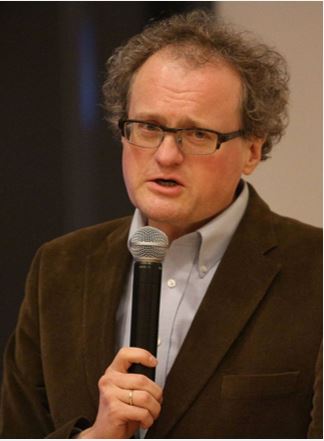
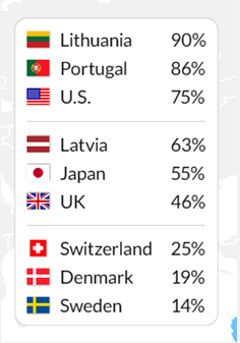
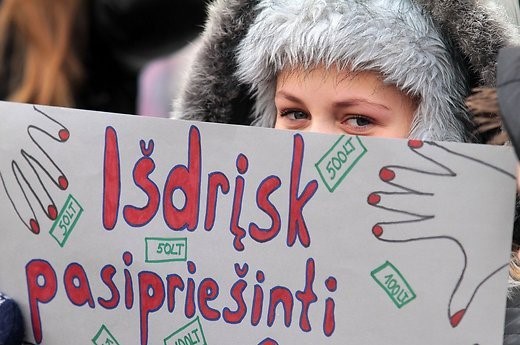


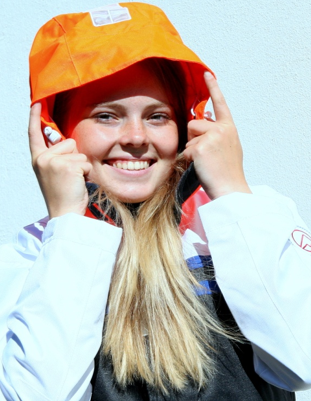
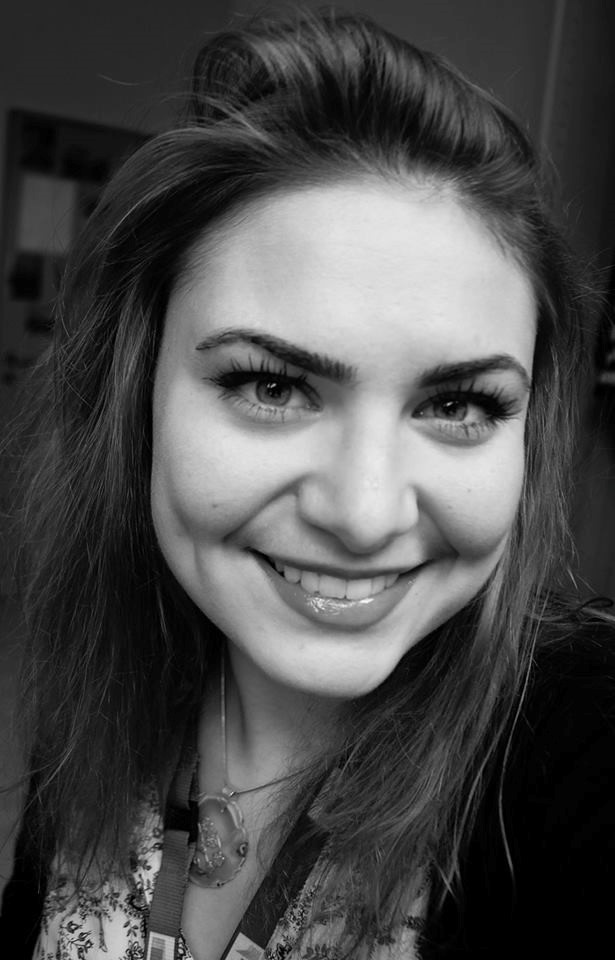

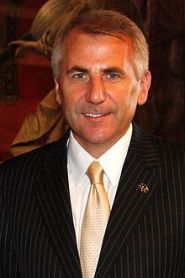
.jpg)
